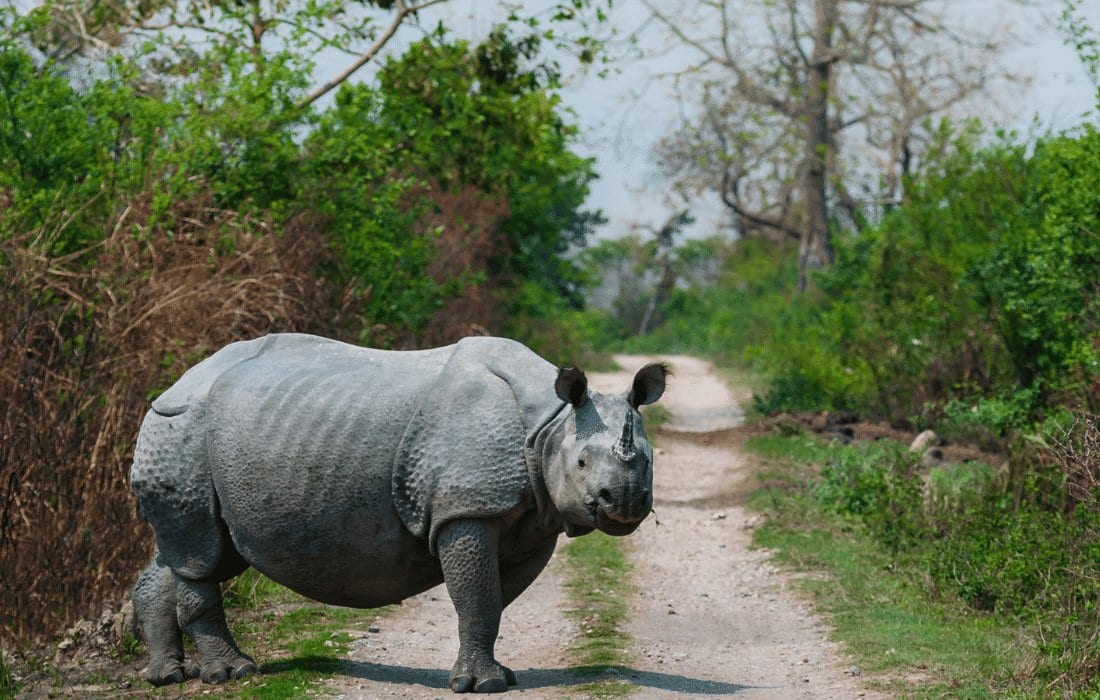Rhino populations have generally increased by around 41% throughout the last decade.
Are rhinos still endangered?
Absolutely.
In 2018, two rhinos were killed every day.
Very worrying is the fact that rhinos also do not appear within the top 10 most popular endangered species. While there is some indication of poaching levels dropping we are not out of the woods yet and we have to continue to educate, advocate, and champion the unicorn of our wildlife.
The success of the white and greater one-horned rhino depends on 24-hour protection. And 24-hour security, intensive monitoring, and active management are dependent on funding.
At the other end of the equation, the demand from China and Vietnam must be stemmed. Education of people in China and Vietnam is also dependent on funding. And lobbying international governments to apply pressure to the Chinese and Vietnamese governments also ultimately depends on funding.
What do you need to know about every one of the five rhino species still roaming the earth?
1. BLACK RHINO
Diceros bicornis
(There are eight subspecies of Black Rhino)
Habitat: Botswana, Kenya, Malawi, Mozambique, Namibia, South Africa, Swaziland, Tanzania, Zambia, and Zimbabwe.
IUCN Red List Classification: Critically Endangered
Current Number: 5,366 to 5,627
Lowest Number: 2,410
The black rhino was once very numerous with around 70,000 present in the 1970s. By 1993 they had been decimated, and it was only through very concerted conservation efforts that they have recovered.
Why are black rhino still endangered today?
Unfortunately, this population suffers significantly from the rhino poaching epidemic. Under CITES Appendix I all international commercial trade of the black rhino horn is prohibited since 1977. China, though having joined CITES since 8 April 1981, remains the largest importer of black rhino horns.
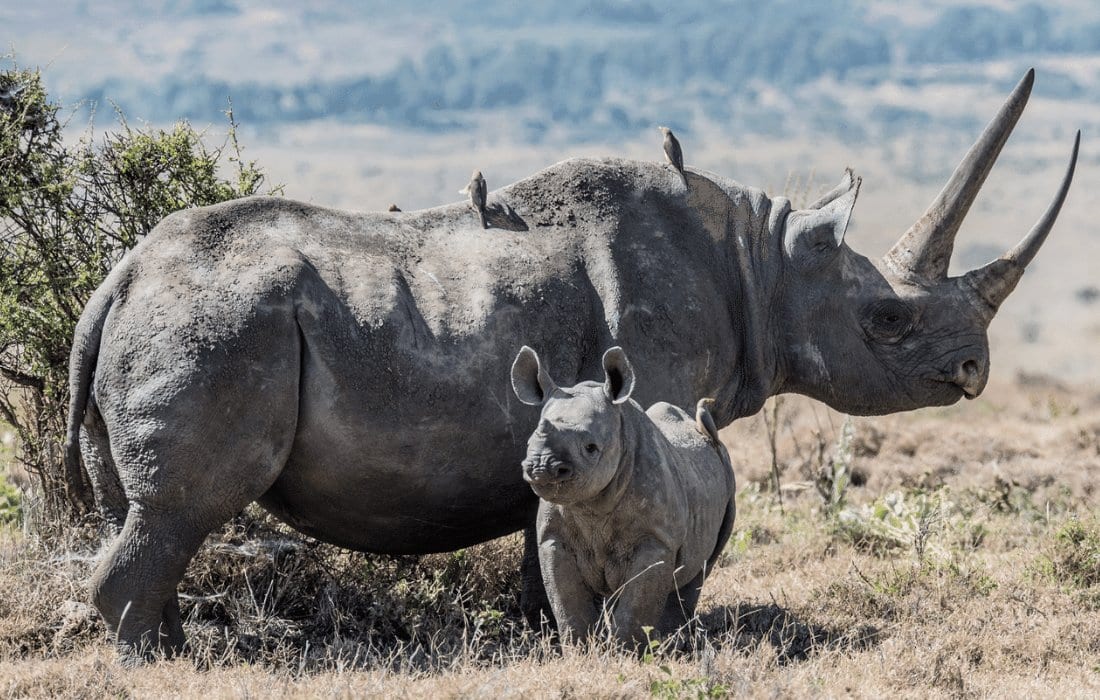 ©David Clode – Unsplash.com
©David Clode – Unsplash.com
2. GREATER ONE-HORNED RHINO or INDIAN RHINO
Rhinoceros unicornis
Habitat: India and Nepal
IUCN Red List Classification: Vulnerable
Current Number: More than 3,500
Lowest Number: Less than 200
Another cautious success story that was designed by careful protection, the Greater One-horned rhino recovery continues to be threatened by poaching.
3. SUMATRAN RHINO
Dicerorhinus sumatrensis
Habitat: The island of Sumatra, and Sabah, Borneo
IUCN Red List Classification: Critically Endangered
Current Number: less than 80
Lowest Number: less than 80
The only extant subspecies of this branch of rhino the Sumatran rhino is the smallest rhino wandering the earth today. The few remaining individuals are under heavy guard and attempts are underway to increase population numbers through semi-natural breeding facilities.
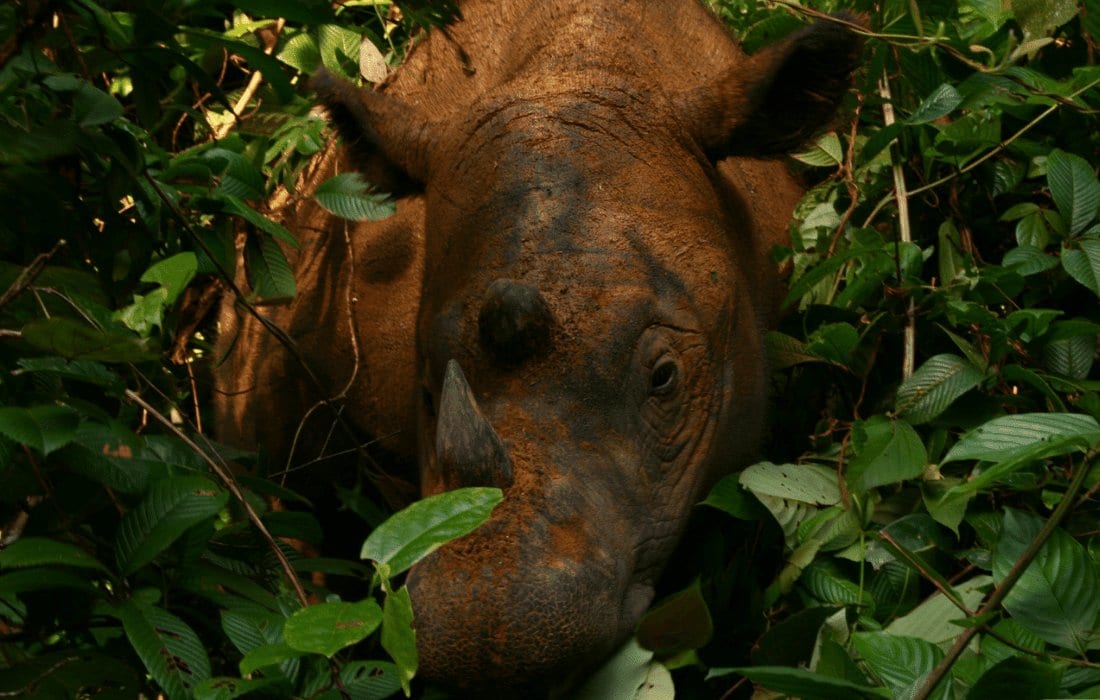 ©Willem v Strien – Flickr
©Willem v Strien – Flickr
4. JAVAN RHINO
Rhinoceros sondaicus
Habitat: The island of Sumatra, and Sabah, Borneo
IUCN Red List Classification: Critically Endangered
Current Number: 58 – 68
Lowest Number: 58 – 68
Possibly the rarest large mammal alive on earth today the Javan rhino lives in the shadow of ‘Son of Krakatoa,’ and this subspecies might be only one eruption from extinction. It was also a cataclysmic volcanic eruption that initially devastated the habitat of the Javan rhino.
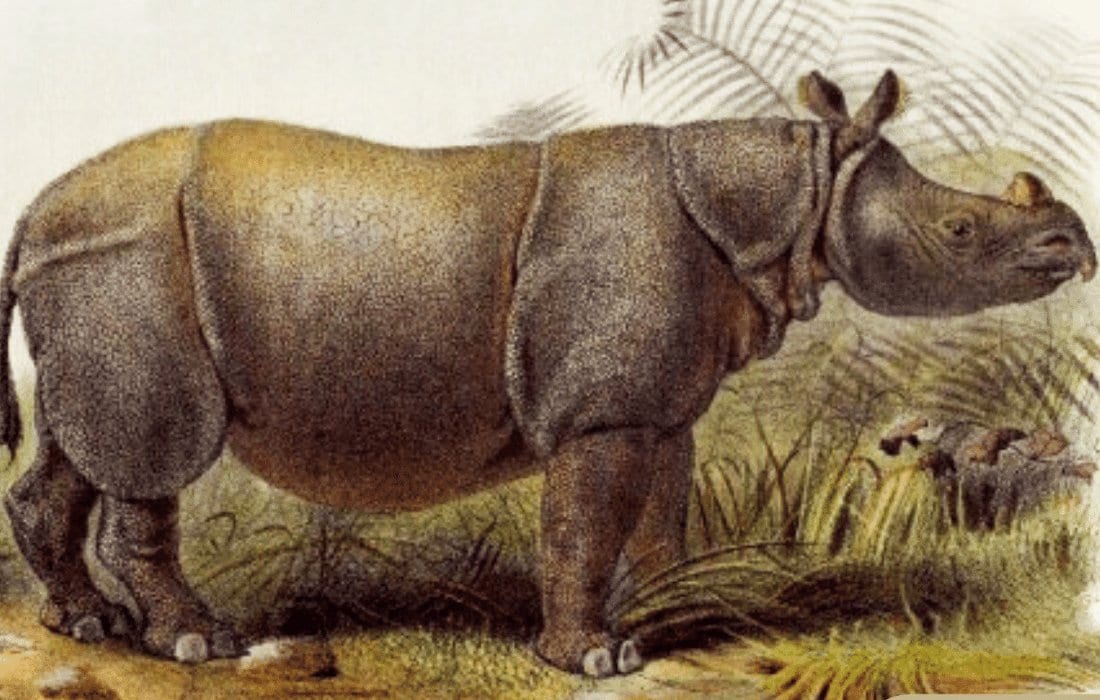 © wikimedia commons
© wikimedia commons
5. SOUTHERN WHITE RHINO
Ceratotherium simum
(There are two subspecies of White Rhino)
Habitat: South Africa
IUCN Red List Classification: Near Threatened
Current Number: Between 17,212 and 18,915
Lowest Number: Less than 100
The incredible turnaround of the white rhino population was not an accident. It took both the government of South Africa and very dedicated conservationists to save the species. Today their relatively high numbers make them the primary target for poachers in Africa. The southern white rhino population is struggling to keep up with its own birth rate.
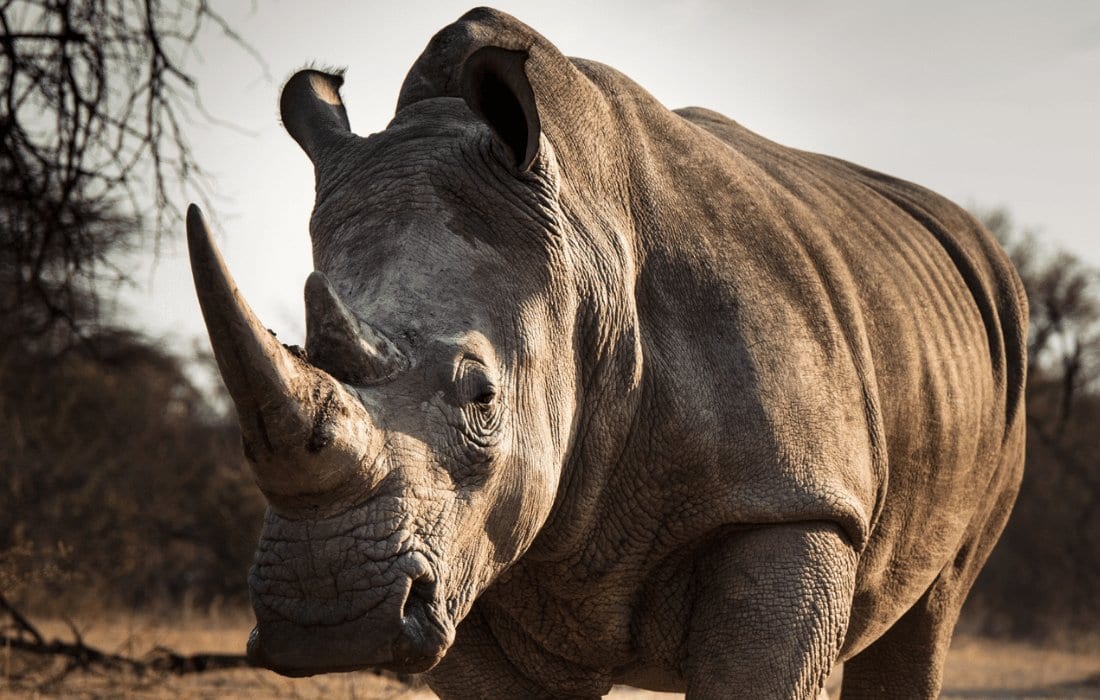 ©Keith Markilie – unsplash.com
©Keith Markilie – unsplash.com
NORTHERN WHITE RHINO
Habitat: Sudan and the Democratic Republic of the Congo
IUCN Red List Classification: Critically endangered/ Functionally extinct
Current Number: 2
Lowest Number: 2
Following the death of the last male Northern White Rhino Sudan on March 19, 2018, only two remain. These are two females living in captivity in Ol Pejeta Conservancy in Kenya. There is no hope of them breeding. As the northern white rhino’s habitat was Sudan and the Democratic Republic of the Congo the wild members of this species were killed by military armies.
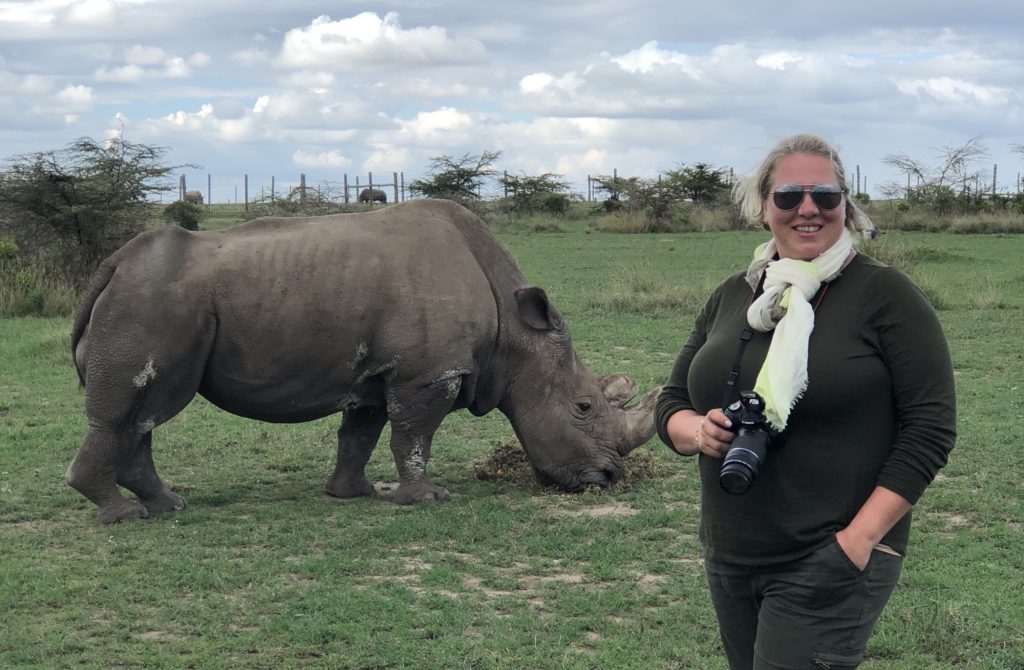
Sudan with Rothschilds Safaris’ Travel Designer Pam Langhoff
How do we choose the right rhino (or any other charity) project to support?
If you are considering becoming a charitable donor, there are several steps you can take to ensure that your money is achieving as much as possible.
1. Identify where your interest lies
i) What cause is important to you?
The environment?
Education?
Hunger?
Wildlife?
Assistance for medical problems?
ii) Where do you want your contribution to work?
Your neighborhood.
The region
Your home country
Internationally
A specific country
iii) Something old, something new
Will you feel more comfortable supporting an established charity?
Are you interested in being involved in a new charity?
Should it be a large or a small charity?
These questions can all be very valuable in finding the right charitable organization… but you might also simply stumble across a program that ‘feels right.’ As long as you are sure that the organization is reputable (trust but verify)this is one time where you should definitely trust your instincts.
2. Take a value inventory
Find a way to learn a little more about the program (or programs if you have a shortlist). Read a couple of newsletters from the charity that has caught your eye. Write them a short note to comment on an aspect of the program that speaks to you or interests you (you might even want to volunteer some of your time. You will be able to make a much better decision once you have started a conversation with them.
3. Now compare apples to apples
Search for charities that do similar work and compare.
4. Still determined to help?
Ask for a letter of determination. Reputable organizations will define their mission and goals clearly and use concrete criteria to describe achievements. Financial records will also be available.
5. Avoid
Charities that won’t share information. And charities that use pressure tactics and won’t take no for an answer.
Begin with these Rhino Conservation Projects
 © Zoë Reeve – unsplash.com
© Zoë Reeve – unsplash.com
1. Save the Rhino International
b. Changing consumer behavior across South East Asia.
c. Inspire communities to protect rhinos
and
2. The Black Mamba anti-poaching unit

